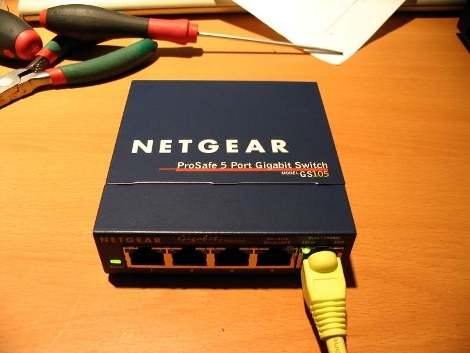
[Kajer] was doing some work with IP phones that use Power over Ethernet. While trying to get this to work with a network switch he decided to use PoE to power the switch itself. The best thing about this is he managed to shoehorn all of the necessary bits into the stock case. Those bits include a bridge rectifier, transistor, resistor, and a 5v power supply. Along the way he discovered he can now power the switch off of USB if he wishes.















